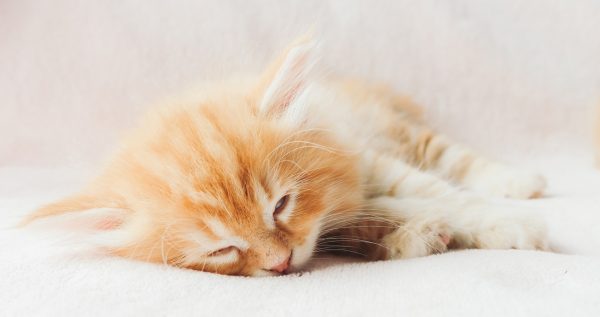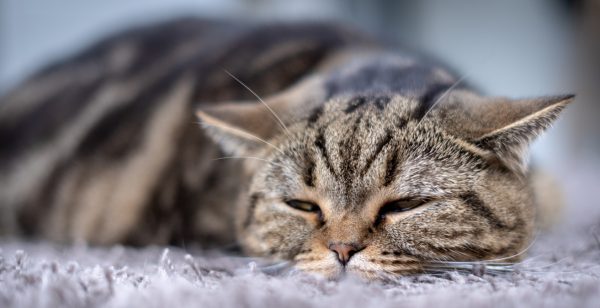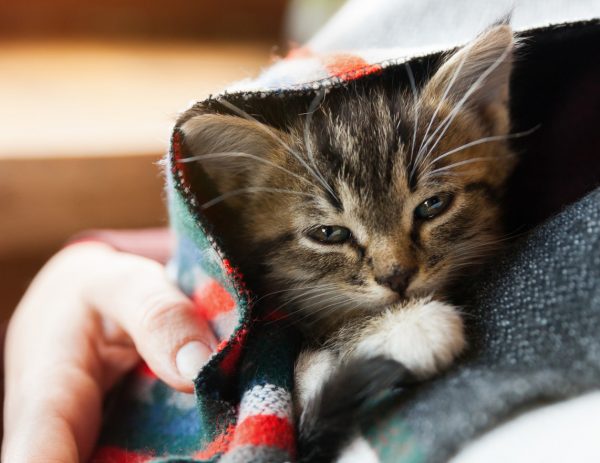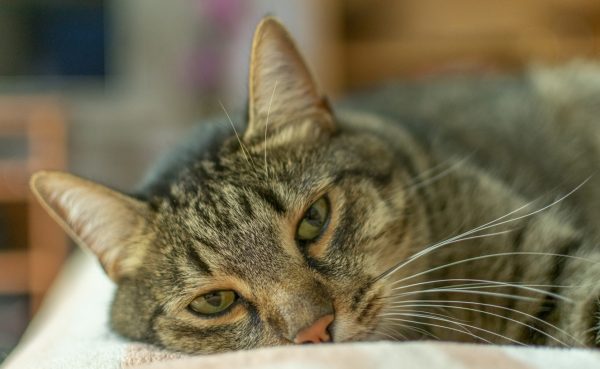Feline Leukemia Symptoms
Overview of Feline Leukemia
Feline leukemia is a serious viral infection that ravages the immune system of cats. In felines that deal with the leukemia virus on a continual basis, 85% of them do not live three years past their diagnosis. Feline leukemia virus, also known by the abbreviation “FeLV,” is a problematic condition that can go unnoticed for years at a time.
In most cases, it is not until the leukemia is brought to fruition through a myriad of signs and symptoms that feline leukemia is diagnosed. At this point, feline leukemia is usually in life-threatening stages.

What Causes FeLV?
Feline leukemia, which is transmitted through infected cats, is caused by a viral attack on the normal functioning of a feline’s immune system. The leukemia can take a mortal toll on the cat through the weakening of its immune system.
The virus leaves felines unable to combat normal infections and illnesses that come and go. FeLV can lead to lymphoma, which is a cancer afflicting the immune system. Anemia in cats and problems related to fertility are also secondary consequences of FeLV.
Cat Populations Prone to Leukemia
In adult cats with strong immune systems, cat leukemia can be overcome completely in about 70% of cases.
However, there are certain felines that are particularly vulnerable to FeLV. Young cats and kittens, both of which do not have fully developed immunity, tend to contract feline leukemia and die from it more often than others. Even more, outdoor cats also have a greater chance of getting it than indoor cats.
How Do Cats Get Feline Leukemia?
The easiest way for a feline to become sick with the virus is through direct contact with the bodily secretions of an infected cat. Urine, fecal matter, eye discharge, drool, and blood are all substances that can carry the virus to unsuspecting cats. Bites, grooming habits between felines, and an infected mother feeding her kittens are all ways that feline leukemia can be easily transferred.

Three Ways Exposure to Leukemia Can Affect Cats
- Transient Infection: The cat is exposed to the virus and, through its strong immune system, it is able to overcome the illness on its own.
- Persistent Infection: A cat infected with FeLV remains infected and goes on to transmit the virus to other cats. The leukemia tends to spread to other areas of the body, which can trigger additional health problems. Felines persistently infected usually do not survive long after diagnosis.
- Latent Infection: With latent infections, the virus remains latent within the body. Even though the cat carries the illness and can infect others, the cat itself does not develop feline leukemia or any symptoms associated with it.
Is Feline Leukemia Contagious?
 Leukemia in cats is extremely contagious. Although people and other animal species cannot be infected, cats can contaminate other cats. One of the biggest concerns surrounding the virus is that it can go undetected for days, months, or years once it is contracted. For this reason, it is imperative that owners keep a close eye on their cats for any abnormal behavior or new symptoms. This is especially true for young cats and cats living outdoors.
Leukemia in cats is extremely contagious. Although people and other animal species cannot be infected, cats can contaminate other cats. One of the biggest concerns surrounding the virus is that it can go undetected for days, months, or years once it is contracted. For this reason, it is imperative that owners keep a close eye on their cats for any abnormal behavior or new symptoms. This is especially true for young cats and cats living outdoors.
Two of the best ways to keep a feline from become tainted with the virus are:
- Keep the cat indoors at all times. If the cat spends a lot of time outdoors, it can become exposed to virally-infected strays and their bodily secretions.
- Vaccinate against FeLV. Although the feline leukemia vaccine does not entirely safeguard the cat from the virus, it certainly is a step toward protecting it.
Signs of Feline Leukemia
Once the signs of FeLV begin to manifest, the virus is considered “active.” Therefore, it can be assumed that the virus is entering the final stages of feline leukemia. At this point, it can be only a matter of months or years before the cat succumbs to the virus.
Here are the frequently seen symptoms associated with FeLV:
- Additional infections that are easily contracted
- Substantial loss of weight
- Inflamed mouth or white gums
- Frequent diarrhea and vomiting
- Fluctuations in appetite
- Breathing issues
- Lethargic behavior
- Uncharacteristic behavior
- Swelling of the lymph nodes
Owners should keep in mind that many of these symptoms are seen in other health problems. Because of this, if these symptoms are being observed in a cat, it should be taken to the vet as soon as possible. A qualified veterinarian will be able to assess and determine whether the cat is experiencing the affects of feline leukemia or another medical condition entirely.

Should a Cat with Feline Leukemia Be Put Down?
Contrary to what many owners are led to believe, a diagnosis of feline leukemia does not necessarily mean the animal is in the process of dying. Some animals can survive a decade or more after being tested positive for FeLV. It all depends on what point in time the symptoms begin to come about, if at all.
In kittens and felines with poor immune systems, the prognosis for feline leukemia life expectancy is between 2 to 3 years following diagnosis. However, healthy adults are much more likely to survive the illness altogether or at least live a considerably normal, happy life.
In fact, over 70% of healthy adult felines conquer the illness altogether after a diagnosis. It is a great comfort to an owner to realize that feline leukemia does not always necessitate an unhappy ending.
Feline Leukemia Treatment
 Even though there is no established means of treating feline leukemia, there are certainly preventative measures that can be used to keep additional infections at bay, such as avoiding outside exposure and vaccination.
Even though there is no established means of treating feline leukemia, there are certainly preventative measures that can be used to keep additional infections at bay, such as avoiding outside exposure and vaccination.
Before treatment can be discussed, a vet will use the ELISA test and the IFA test to pinpoint if feline leukemia is present and how advanced the illness is. In addition, one of the most advantageous ways to go about caring for a feline with leukemia is to provide a comfortable, happy environment for it. Owners should be sure to bring the feline to see the vet regularly to keep updated on the progress of the illness.
The cat should be kept under close supervision for any further symptoms that may arise. These should be reported to the vet immediately. It is certainly possible for a pet to live a long, joyful life with feline leukemia with the help of a vet and caring owners.



